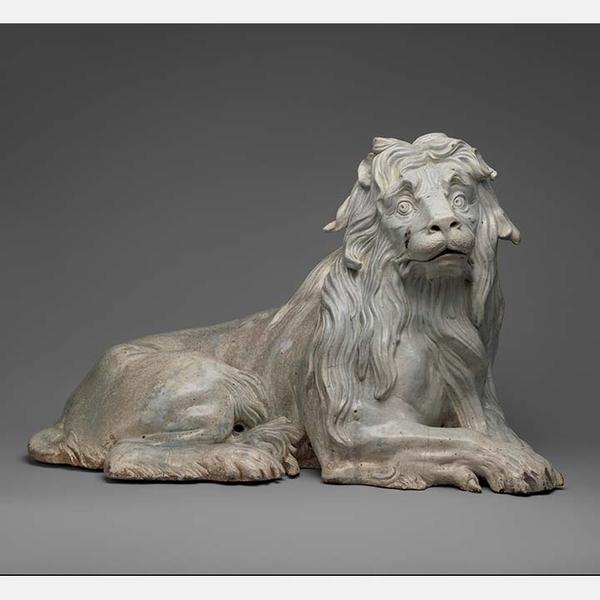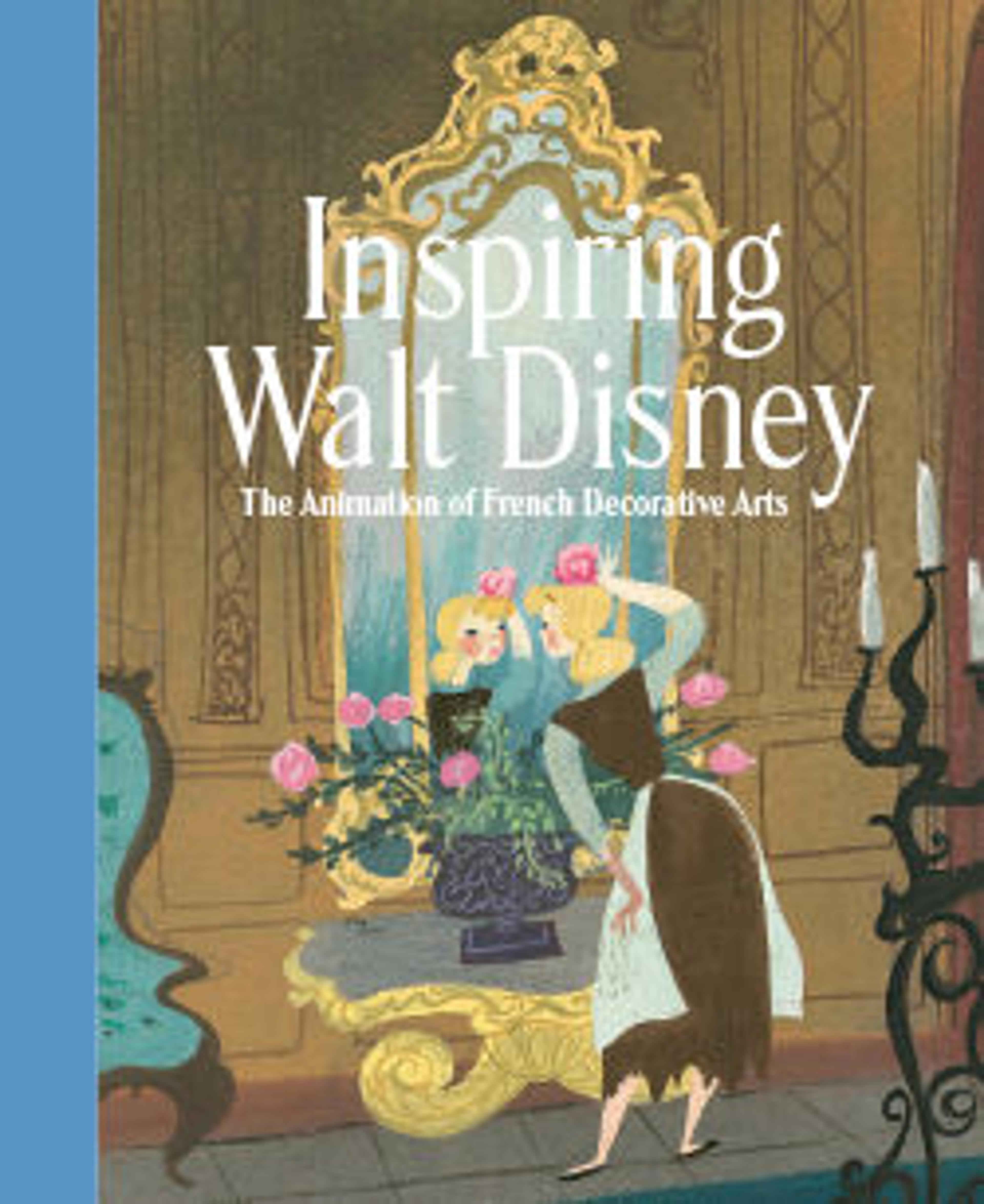Lion (one of a pair)
No precedent existed for a project of this scope in terms of scale of the commission and the individual figures. A factory order from late 1733 lists 296 figures of 37 different mammals, and 292 birds of 32 different varieties, which represented the commission at its maximum size.[4] The technical challenges involved in producing these large figures were so extreme that the commission was never completed, although 159 mammals and 319 birds were inventoried in the Japanese Palace in 1736,[5] the last year in which the figures were produced. The scale of the figures presented the most fundamental problem to the factory. Augustus the Strong had stipulated that the figures be lifesize, or as approximate to lifesize as possible, and the standard porcelain paste used by the factory was not durable enough to fabricate figures of this scale. Numerous experiments were conducted to make a paste capable of supporting the mass required by the size of the animals. The addition to the paste of ground- up pieces of fired porcelain provided one of the more successful remedies, but even with this fortified porcelain body, cracking was a common occurrence and source of constant concern. It was essential for the figure to dry thoroughly before the first firing, and both the sheer quantity of porcelain paste and the requisite thickness of the walls of the body meant that six to eight weeks of drying time were often needed in order for all the moisture in the clay to evaporate.[6] The first kiln firing, conducted at low temperature, was intended to stabilize the figure, which was fired a second time at a much higher temperature after the glaze was applied. Porcelain shrinks when subjected to the heat of the kiln, and this inevitable shrinkage contributed significantly to the problem of cracking.
Augustus the Strong not only wanted the porcelain animals to resemble in scale the actual animal depicted but also requested that the figures be colored naturalistically. In order to accomplish this stipulation with enamel colors, a third firing would have been necessary. It was clear the larger animals would not survive an additional firing; therefore almost all were colored with oil paints that did not need to be fired. This type of decoration, known as cold painting, did not produce satisfactory results, because the oil paints lacked the color saturation and glossy finish of fired enamel colors. The oil paints did not adhere well to the porcelain surface, and because they have darkened with time, most of these original surface treatments have been removed, because the peeling and discolored paints rendered the animals unsightly. The painting of the animals did offer the opportunity to disguise the cracks and blemishes, which were frequently numerous, and because many of the animals no longer bear their original decoration, they have come to be understood to modern eyes as “white” animals, whose musculature and coats can be more fully appreciated unobscured.
The work on the large animals almost certainly began in the second half of 1730, and it is known that modeler Johann Gottlieb Kirchner (German, b. 1706) (see 54.147.65a–c) and the recently hired sculptor Johann Joachim Kändler (German, 1706–1775) were creating models for various animals by September 1731.[7] The lion and lioness are the work of Kirchner, who produced the models for the two figures before August 1732.[8] The two recumbent lions are among the most ambitious of the animals created by him, and they are notable for having been conceived as a pair, with the lioness in the answering pose to that of the lion.[9] In his depiction of the two animals, Kirchner has not attempted to create realistic portraits of male and female lions. Both figures lie in a docile pose with front legs crossed and their heads turned toward the viewer. Each has an expression that has been described as contemplative, and their expressive eyes seem decidedly more human than animal. There is little sense in Kirchner’s depictions of the lions of the power and incipient danger for which they are known, despite the perception of muscular tension with which the figures are imbued. It has been suggested by Samuel Wittwer that Kirchner’s aim was to use the imagery of a lion as the king of animals to evoke the majesty of a human king, which by association would apply to Augustus the Strong, for whom the animals were created.[10]
While a total of twenty-four figures of both the male and female lions was ordered, it appears that a lesser number of each model were produced, despite the fact the calculation is made complex by a variety of factors. Seven of the male lions and five female lions are known to have survived, including the examples under discussion. The male lion now at the Museum is distinctive among this group for his pale- blue coloring. It is not clear why the lion’s glaze has a pale-blue tint, although it can be assumed that it was not done deliberately for aesthetic effect. It is possible that blue was added intentionally to the glaze to counter the brownish hue of the porcelain paste, or that a small amount of cobalt residue entered the glaze mixture by mistake.[11] As the lion was intended to be painted with oil colors, this defect would not have caused undue concern at the factory, and today we appreciate the blue tint as evidence of the technical struggles encountered in the production of these remarkable pieces of sculpture.
Footnotes
(For key to shortened references see bibliography in Munger, European Porcelain in the Metropolitan Museum of Art. NY: The Metropolitan Museum of Art, 2018)
1. The vast majority of the current knowledge of the commission and the porcelain animals themselves is due to the work of Samuel Wittwer, whose findings are published in Wittwer 2006.
2. Ibid., pp. 32–58.
3. Ibid., pp. 56–58.
4. Ibid., p. 67.
5. Ibid., p. 68.
6. Ibid., p. 83.
7. Ibid., p. 66.
8. Ibid., pp. 312–13. While Wittwer only attributes the lions to Kirchner, they are universally accepted as his work.
9. Ibid., indicating that the lion was conceived first.
10. Ibid., pp. 175–76.
11. Ibid., p. 86.
Artwork Details
- Title:Lion (one of a pair)
- Modeler:Johann Gottlieb Kirchner (German, Merseburg 1706–after 1738 Berlin, active at Meissen 1727–28 and 1731–33)
- Manufactory:Meissen Manufactory (German, 1710–present)
- Date:ca. 1732
- Culture:German, Meissen
- Medium:Hard-paste porcelain
- Dimensions:Overall (confirmed): 21 x 32 3/4 x 13 1/2 in. (53.3 x 83.2 x 34.3 cm); Pedestal: 45 x 37 x 20 1/2 in. (114.3 x 94 x 52.1 cm)
- Classification:Ceramics-Porcelain
- Credit Line:Wrightsman Fund, 1988
- Object Number:1988.294.1
- Curatorial Department: European Sculpture and Decorative Arts
Audio

2325. Meissen Lion
Inspiring Walt Disney
PAIGE O'HARA:
This porcelain lion was made for Augustus the Strong, Elector of Saxony and King of Poland. Augustus was obsessed with porcelain and founded the Meissen manufactory. He ordered a menagerie of 600 animals from them, including this lion designed by Johann Gottlieb Kirchner.
Take a close look at the lion’s eyes, which speak to a larger story. In the 18th century, philosophers debated whether animals had souls and, therefore, feelings. If so, some believed that this was expressed through their facial expressions, particularly the eyes. Kirchner tried to communicate this lion’s monarchical nature through his raised eyebrows. But the effect is more melancholy than regal, highlighting the challenges artists face when anthropomorphizing animals.
Eyes speak volumes for people, too. Nearby, is a portrait of Magdalena Gonzáles. Her father, Pedro, was brought to Paris from the Canary Islands and their family lived at various European courts. Several family members, including Pedro and Magdalena, were afflicted with a genetic condition causing excess hair. They participated in court life, but weren’t treated as human equals. Instead, they were seen as curiosities, often equated to animals. Magdalena’s story is one of alienation and oppression, and in this portrait, it’s her eyes that convey her humanity with great poignancy.
When drawing the Beast, Disney animator Glen Keane equally paid special attention to depicting the eyes, as he attempted to convey the character’s humanity.
More Artwork
Research Resources
The Met provides unparalleled resources for research and welcomes an international community of students and scholars. The Met's Open Access API is where creators and researchers can connect to the The Met collection. Open Access data and public domain images are available for unrestricted commercial and noncommercial use without permission or fee.
To request images under copyright and other restrictions, please use this Image Request form.
Feedback
We continue to research and examine historical and cultural context for objects in The Met collection. If you have comments or questions about this object record, please contact us using the form below. The Museum looks forward to receiving your comments.
